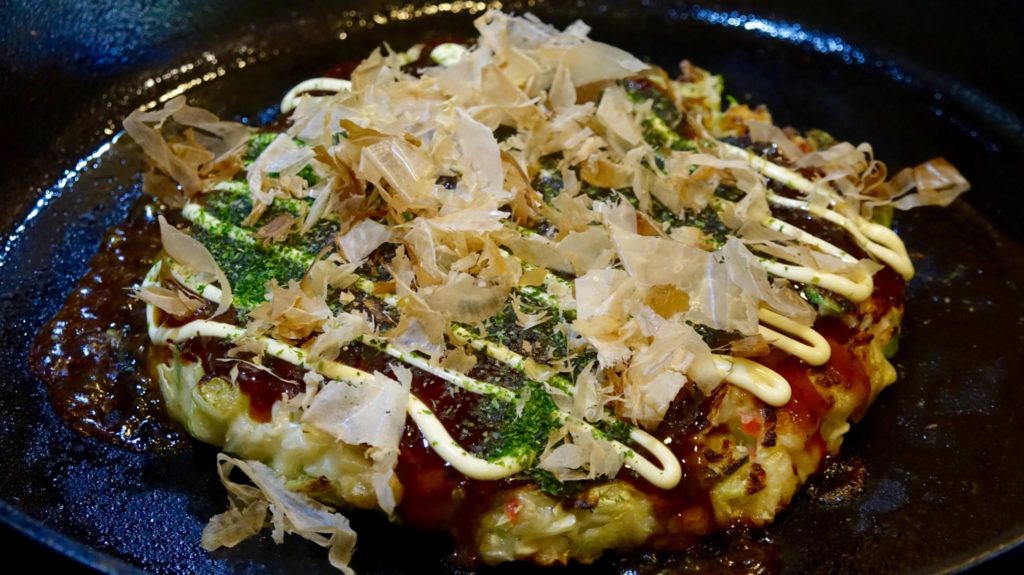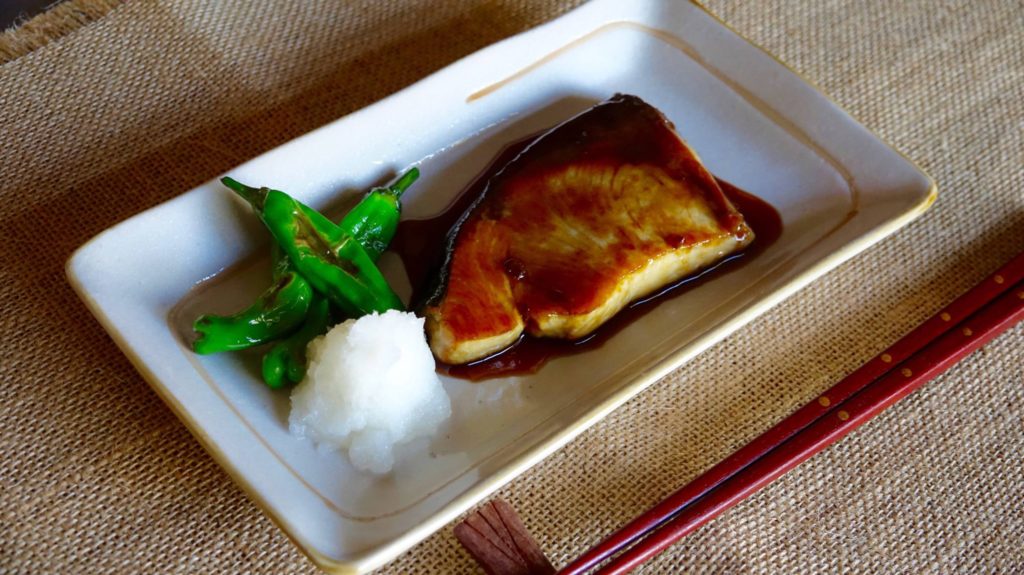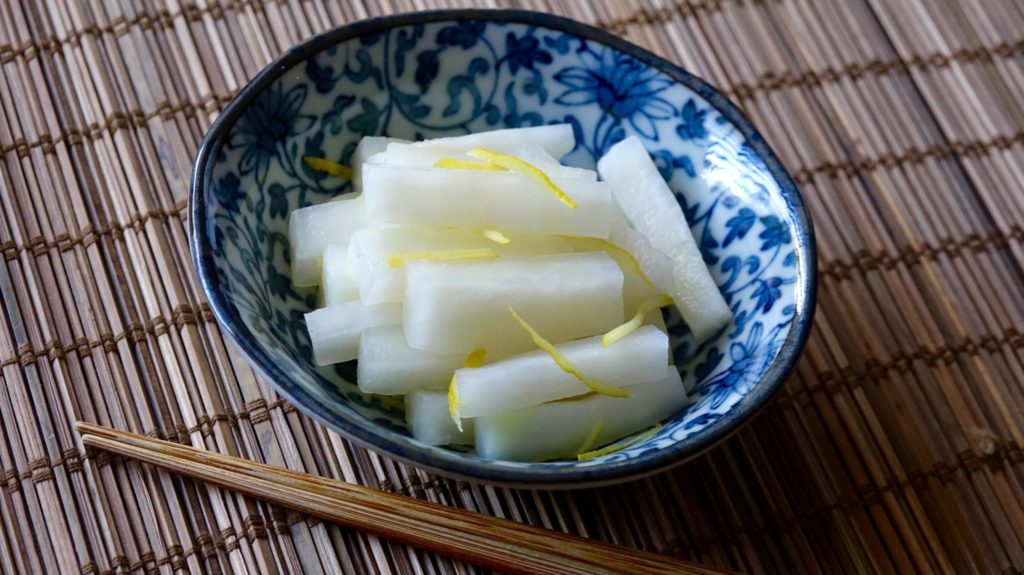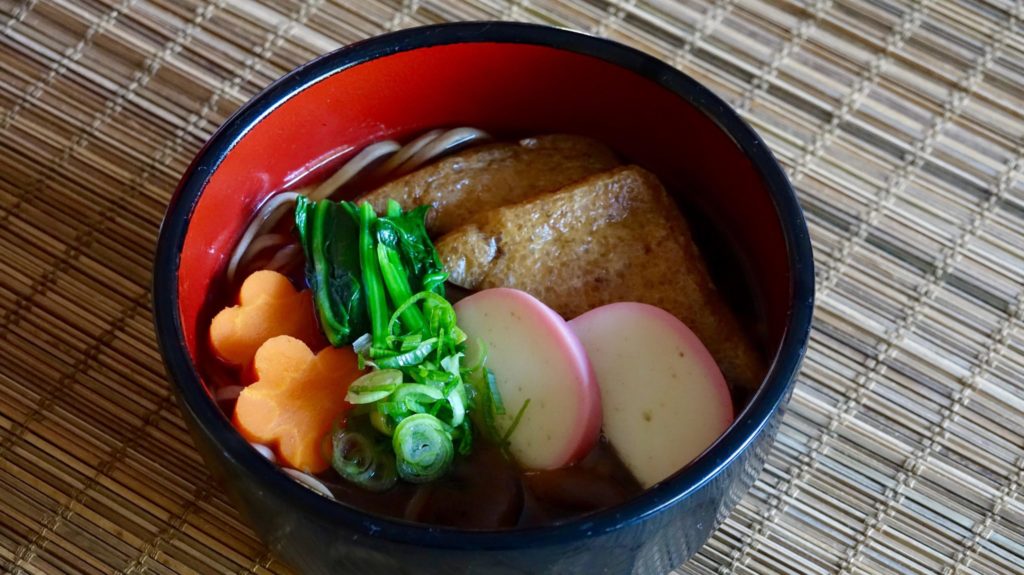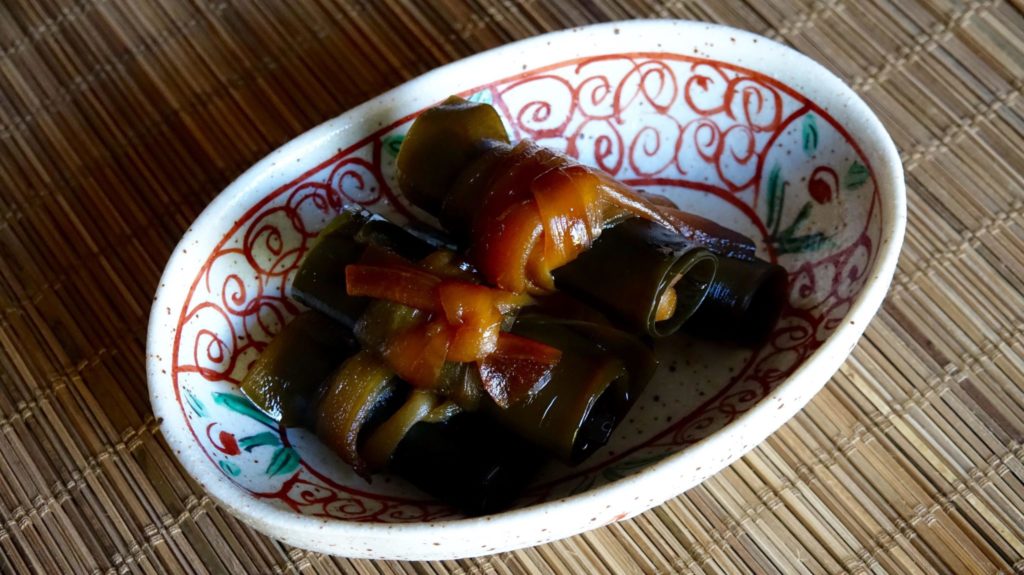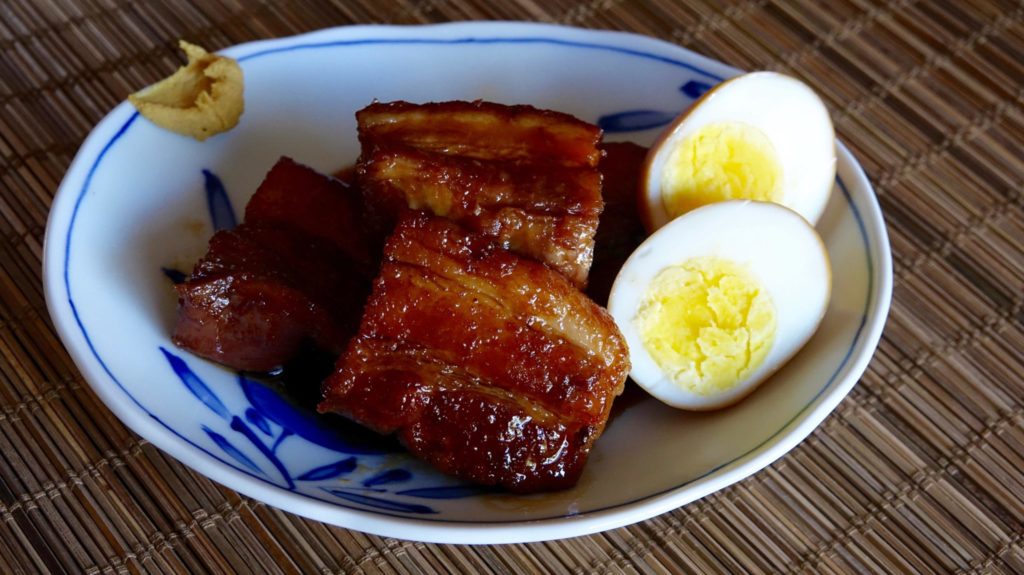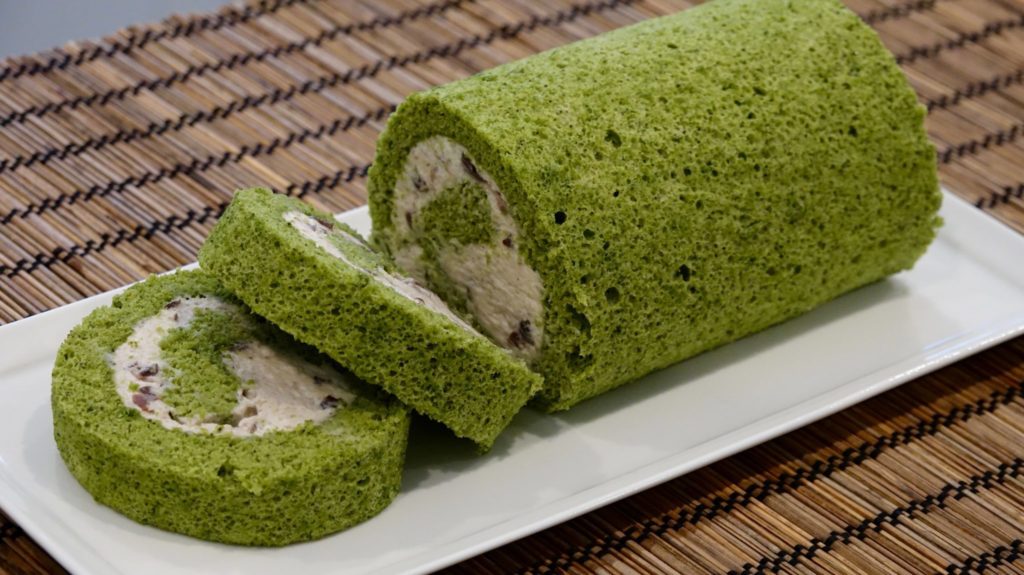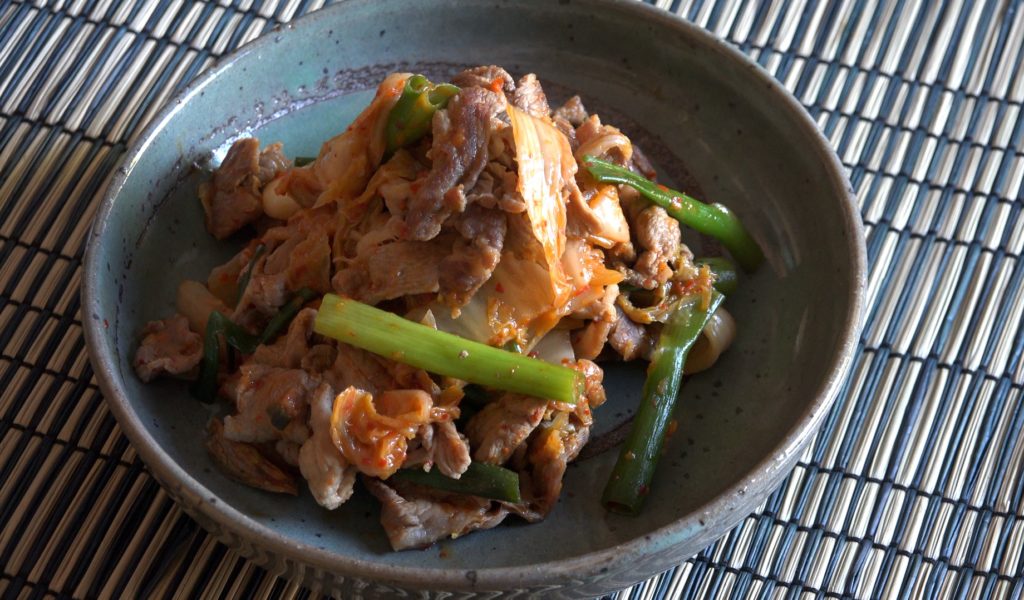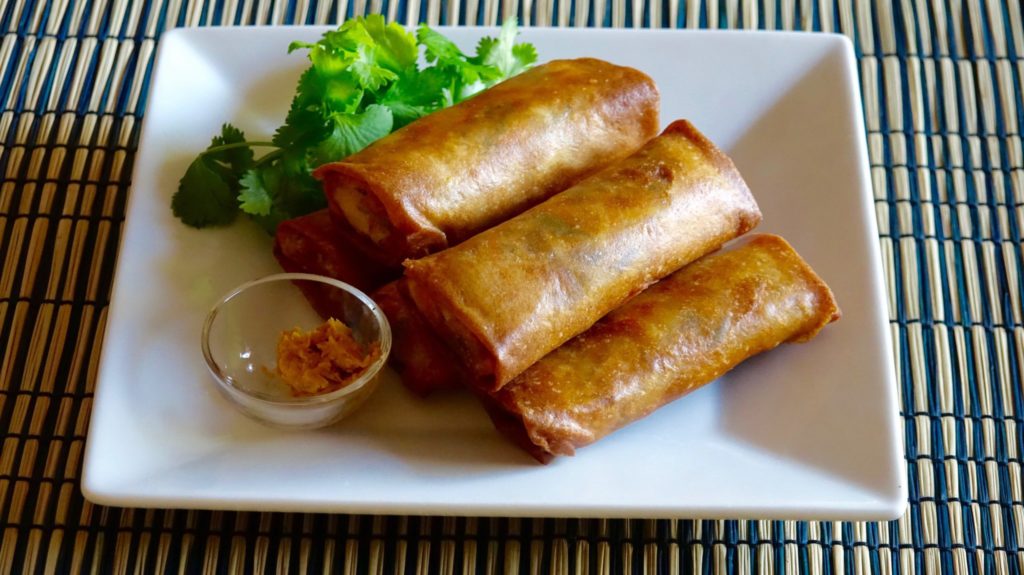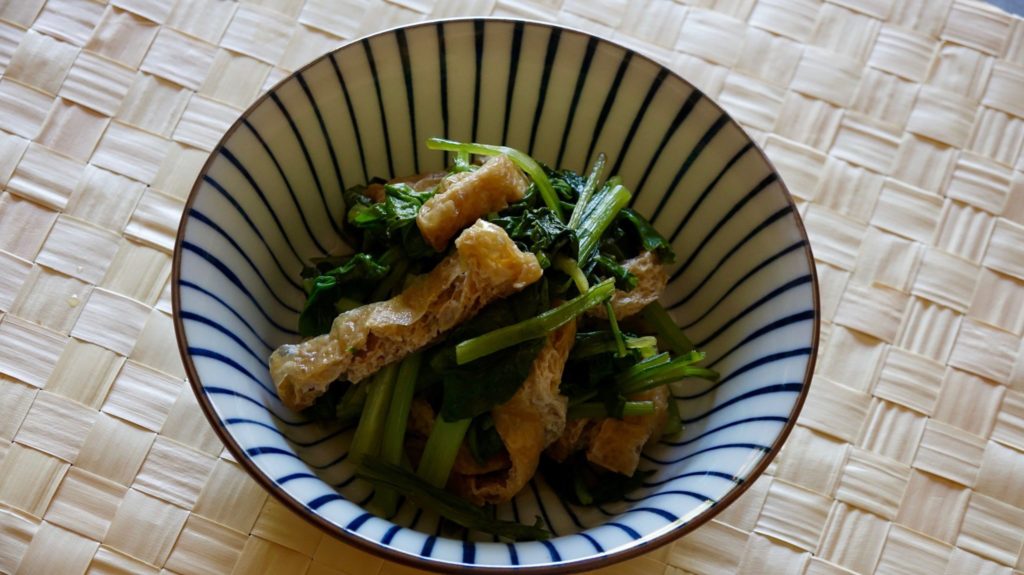Okonomiyaki is a cabbage pancake covered with savory Okonomiyaki sauce. Okonomiyaki sauce is a Worcester-based sauce with some sweetener, similar to Tonkatsu Sauce, and it is the crucial flavor of this dish. Okonomiyaki with pork is the one of the most popular kinds, but Squid is also a staple item on the menu at Okonomiyaki restaurants in Japan. We recommend using raw squid because it will give the batter more flavor, but any squid you can find, such as calamari (not breaded), is fine.
Buri Teriyaki is Yellowtail fish cooked and coated with Teriyaki Sauce. Although a lot of people may think of Teriyaki mainly with chicken, fish Teriyaki may be eaten more often in Japan.
Teriyaki means “grilled with a shine,” and it is an important cooking technique for meat and fish. Sugar in teriyaki sauce gives a shine to food which makes it not only tasty, but also look more appetizing. Japanese Teriyaki sauce is not as sweet as some Teriyaki dishes from restaurants here. If you’re used to the taste of that and like it, adjust the amount of sugar and Mirin.
Yuzu Daikon is pickled Daikon radish with Yuzu citrus. This sweet and sour pickle dish has the refreshing taste of Yuzu citrus and a crunchy texture you will enjoy. Yuzu Daikon may be quite easy to make for Japanese Tsukemono (pickled vegetables), but it is very tasty. It is also good in the fridge up to a week to 10 days, so it comes in handy when you need just a little something for a meal
Shippoku Soba is hot soba noodle dish with various toppings. It is often on the menu at Soba noodle restaurants in Japan, but not seen as much at Japanese restaurants in the US, since it is a more regional Japanese food. Shippoku Soba can be eaten at any time of the year, but you can try it as Toshikoshi Soba which is the famous noodle dish for the end of the year in Japan.
Kobumaki is Japanese rolled Konbu (sea kelp; also spelled “Kombu”) cooked in a sweet and salty sauce. It is a part of Osechi Ryori, the Japanese traditional new year feast. There are a lot of kinds of Osechi dishes, but Kobumaki is one of the most traditional and important dishes, and it is almost always included in it. Like many other dishes in Osechi, Kobumaki is seasoned strongly to be able to last for several days during the Japanese holiday season.
Kakuni is braised pork belly cooked and flavored strongly with Soy Sauce and sugar. It is not a traditional Japanese dish to put in Osechi Ryori (New Year feast), but a lot of people today enjoy Kakuni in their Osechi as well as many other occasions.
Matcha Roll Cake (抹茶ロールケーキ) is Matcha flavored sponge cake rolled with Anko (sweet red bean) whipped cream. This western style dessert has traditional Japanese flavors, however, it is light enough to be a perfect ending after any kind of meal.
Matcha is a kind of green tea that is in a powdered form, traditionally used for the Japanese tea ceremony, and it is different from regular green tea leaves. Matcha tastes rather strong and bitter by itself, but its refreshing flavor goes very well with dairy and sugar. It is an excellent complement to baked goods especially, leaving no bitterness but a nice fragrance. Matcha has become a common flavor for many drinks and desserts in the US too, such as Matcha Ice Cream and Matcha Latte that you may have seen before. The cream inside this cake is flavored with Anko which is another very authentic component for Japanese desserts. By mixing with whipped cream, Anko becomes a milder taste so that two big flavors don’t crush each other.
Buta Kimchi is stir-fried pork and Kimchi, chili pickled nappa cabbage. This spicy dish is popular in Japan at Izakaya (bars which serve a lot of small appetizers with drinks) and also at home as a quick and easy appetizer.
Harumaki (or spring roll actually in Japanese) are deep-fried egg rolls which are known well in Chinese cuisine in the US. Many people who are not familiar with much Japanese food may even have had Harumaki at some point of life. Harumaki is also a popular Chinese dish in Japan, similar to Gyoza dumplings. You can find Harumaki at Chinese restaurants over there, of course, but it’s also a very common home-made food Japanese moms make for dinner. If you only know them from restaurants, this is way better than that (hopefully!), and it is worth trying at home.
Komatsuna Nibitashi is a quintessential Japanese side dish. It is light, healthy, and subtly flavored, and can go with any entree and steamed rice. You don’t see this traditional but easy dish very often at Japanese restaurants in the US, but it is very typical Japanese food made and eaten at home.
